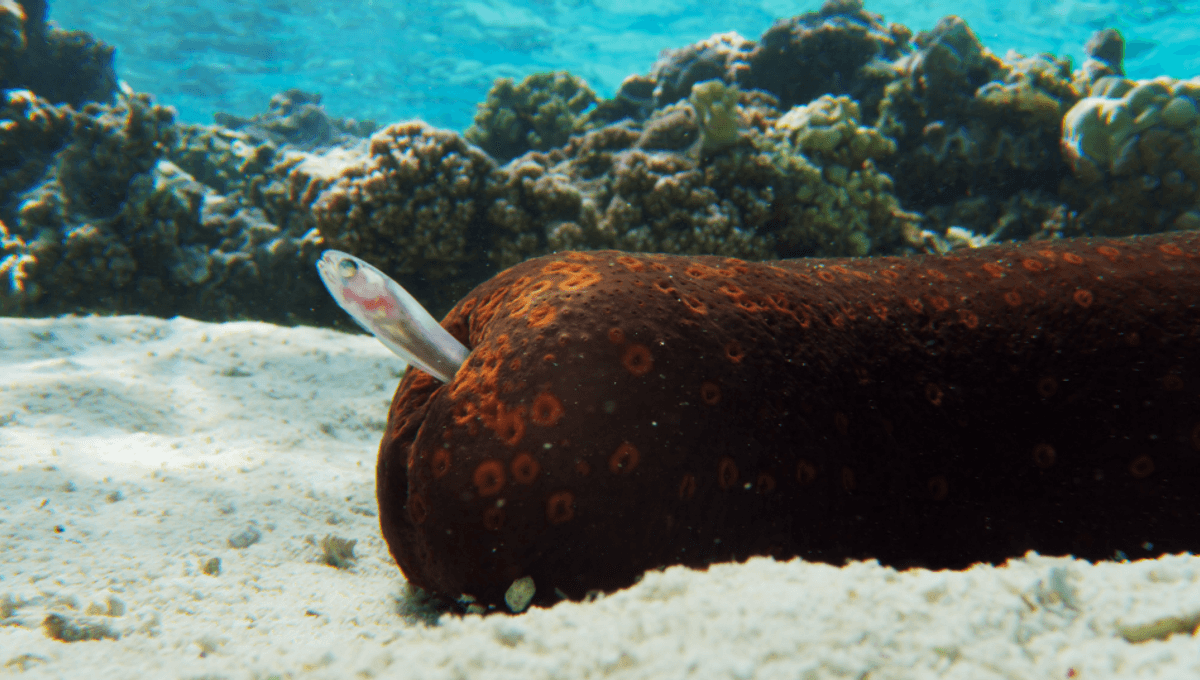-
Noticias Feed
- EXPLORE
-
Páginas
-
Blogs
-
Foros
Meet The Pearlfish That Calls Sea Cucumbers' Butts Home And Can Reverse Park Into Tight Spaces

“An Ass Can Save Your Life”: Meet The Pearlfish That Live Inside Sea Cucumbers’ Buttholes
The pearlfish is famous for its hiding skills. A small, slender, and scaleless fish, it’s a bit defenceless out in the ocean, but it’s found a unique way to survive the dangers of the day: it lives inside the buttholes of sea cucumbers.
“You see, the underdogs, they know that in the game of life an unthinkably revolting solution can save your ass, and an ass can save your life,” said Ryan Reynolds in UNDERDOGS, a new wildlife documentary with a difference from National Geographic. Yep, it seems a pearlfish’s front door is a literal butthole, and if you’re finding that hard to believe, you’re not alone. “We heard about this group of pearlfish which basically take sanctuary in a sea cucumber’s butthole, and we were like, no come on. We’ve not seen that. We were quite sceptical, [but] the scientists were like 'no no, [it’s true]. When you get in there, it’s like a biodiversity hotel,’” Vanessa Berlowitz, executive producer of UNDERDOGS, told IFLScience. “This whole ecosystem lives up a sea cucumber,” added fellow executive producer, Mark Linfield. Pearlfish belong to the ray-finned fish family known as Carapidae (the magic of saying this fast in light of where they live isn’t lost on us). There are many species and they come in many colors, but generally speaking, they're all long, thin, and lacking in scales, making them look rather eel-like. Some adult pearlfish can grow to around 50 centimeters (20 inches) in length, which is an eye-watering thought when you find out where they spend their days. Some pearlfish live independently, but some species use their noodly bodies to parasitize other animals or use them as temporary accommodation. Sometimes it backfires, like the pearlfish that tried to hide inside an oyster and became a pearl, and other times it leads to the discovery of untapped real estate: sea cucumber butts. There's no getting hunted inside a sea cucumber, which is a perk, but typically this safe haven would be ruined by the toxins released by many sea cucumber species. However, the slippery pearlfish are one step ahead again. They coat themselves in a generous layer of mucus that protects them from the toxic effects, and - presumably - makes for a smoother entrance. What the sea cucumber thinks of all this, who’s to say? But they are forced to tolerate the letting situation because they can’t clamp down their buttholes forever. That’s because sea cucumbers breathe through their anuses, and the repeated opening and closing off the butthole (technically a cloaca, as in cloacal respiration) is how they get oxygen-carrying water to the respiratory trees inside of them (trees which, by the way, can be expelled to deter attackers raising the question: are they more into the symbiosis than we realize?). Science loves to throw up surprises, and we wish we could have been a fly on the wall the day Victor Benno Meyer-Rochow brought home a leopard sea cucumber in 1975. He popped the whopper (that National Geographic says was 40 centimeters [16 inches] long) in a bucket of water and later returned to find he had bagged more than he’d bargained for. Within 10 hours, somewhere in the region of 15 pearlfish came wriggling out of that sea cucumber’s butthole. Truly accommodation to make your college digs look palatial. On pondering whether this many pearlfish had gathered in a single butthole to breed, Meyer-Rochow said, “If indeed the 15 fish entered for sexual reasons, one cannot help but think of the orgy that must have taken place inside the sea cucumber.” Yes, nature can really be disgusting, but if you’re into it, there’s plenty more where that came from in the Total Grossout episode of UNDERDOGS, a series which celebrates the animals out in nature that are killing it in unconventional ways – like the world's weirdest worm. If you fancy cheering on the little guys for a change, this one’s definitely for you. UNDERDOGS, narrated by Ryan Reynolds, premieres June 15 at 9/8c on National Geographic and streams the next day on Disney+ and Hulu. The premiere will also be simulcast on ABC.What is a pearlfish?
Why do pearlfish hide in sea cucumber butts?
Pearlfish in sea cucumbers: An enlightening discovery


